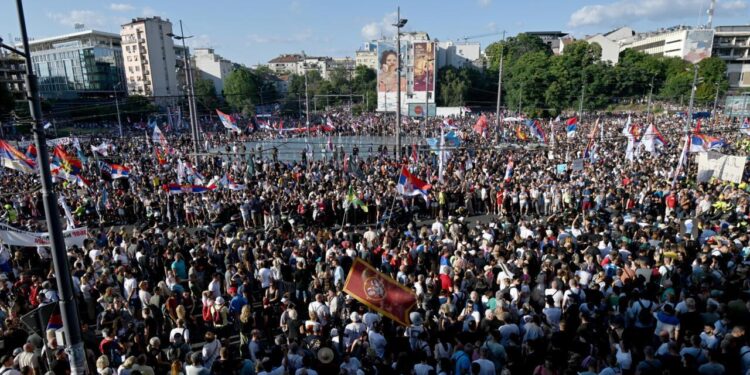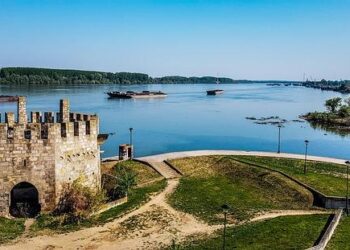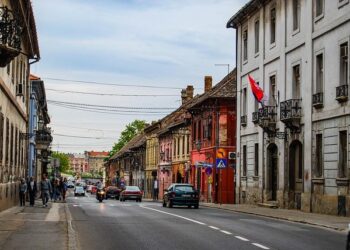Tensions boiled over in Serbia as recent protests, initially peaceful, escalated into bursts of violence that have captured international attention. Amid mounting political frustrations and social unrest, clashes between demonstrators and law enforcement agencies have raised urgent questions about the deeper causes fueling these disturbances. This article delves into the complex factors behind the eruption of violence at protests in Serbia, exploring the political dynamics, societal pressures, and immediate triggers that have transformed public demonstrations into scenes of confrontation.
Root Causes Driving the Surge of Violence in Serbian Protests
Fueling the recent escalation in unrest, a complex mesh of social dissatisfaction and political distrust has taken center stage. Economic instability, aggravated by rising unemployment and stagnant wages, has left large segments of Serbian society feeling marginalized. Simultaneously, allegations of government corruption and opaque decision-making processes have eroded public confidence, creating fertile ground for frustration. These tensions have been further amplified by the media landscape, where polarization and misinformation intensify divisions across the population.
Several intertwined factors have contributed to the volatile atmosphere:
- Youth Disillusionment: High rates of youth unemployment and limited prospects have sparked a generational demand for change.
- Weak Rule of Law: Perceived impunity for political elites has diminished trust in institutions.
- Ethnic and Regional Divisions: Lingering historical grievances occasionally flare, complicating national unity.
- External Influence: Foreign actors and social media campaigns have sometimes exacerbated conflicts.
| Key Drivers | Impact |
|---|---|
| Economic Hardships | High frustration over living standards |
| Erosion of Political Trust | Public disengagement and volatility |
| Youth Unemployment | Amplified calls for reform |
| Media Polarization | Increased misinformation and tension |
Analyzing the Role of Political Tensions and Social Frustrations
The recent surge in violence during protests across Serbia reflects deeper political tensions simmering beneath the surface. Widespread distrust in government institutions and dissatisfaction with perceived authoritarian practices have fueled a volatile atmosphere where peaceful demonstrations often escalate. Many protesters feel alienated by the political elite’s failure to address issues such as corruption, media suppression, and electoral integrity. These grievances have manifested in frequent clashes, with both activists and law enforcement locking horns amid growing polarization.
Beyond political discontent, the protests underscore extensive social frustrations that cut across diverse demographics. Youth unemployment, economic stagnation, and social inequality have compounded frustrations, especially among vulnerable communities. This complex dynamic can be summarized by the following factors:
- Economic hardship: Persistent joblessness and declining living standards
- Media control: Limited access to independent news sources fostering mistrust
- Judicial concerns: Perceptions of a compromised legal system
- Ethnic and regional divisions: Heightened tensions in multi-ethnic areas
| Key Factor | Impact |
|---|---|
| Political Distrust | Erosion of public confidence in governance |
| Economic Struggles | Fuel for social unrest and protest participation |
| Media Restrictions | Amplification of misinformation and polarized narratives |
Strategies for De-escalation and Restoring Public Trust in Serbia
Addressing the underlying grievances in Serbia requires a multi-faceted approach centered on dialogue and transparency. Local authorities must prioritize open communication channels that allow citizens’ voices to be heard, fostering an environment where concerns can be addressed before tensions escalate. Inclusive platforms for civic engagement – such as town hall meetings, citizen forums, and digital consultations – enable communities to actively participate in the decision-making process, building mutual respect and understanding. Additionally, implementing impartial investigations into incidents of violence and abuse of power helps restore faith in law enforcement and judicial institutions.
Restoring public trust also hinges on concrete policy reforms combined with consistent accountability measures. Among key strategies are:
- Strengthening independent media to provide unbiased coverage
- Reforming police training with a focus on human rights and de-escalation tactics
- Enhancing transparency in government actions and spending
- Establishing oversight bodies with citizens’ representation
| Strategy | Expected Outcome |
|---|---|
| Community Policing Initiatives | Improved relations between police and public |
| Transparent Government Reports | Reduced misinformation and speculation |
| Media Literacy Campaigns | Better public discernment of news sources |
| Independent Oversight Committees | Greater accountability for misconduct |
Key Takeaways
As protests in Serbia continue to unfold, the recent surge in violence underscores deep-seated tensions that extend beyond immediate grievances. Understanding the complex interplay of political, social, and economic factors is crucial to comprehending the unrest shaking the nation. As events develop, close attention will be required to monitor how authorities and protesters navigate this volatile landscape, and whether dialogue can pave the way toward lasting resolution.
















